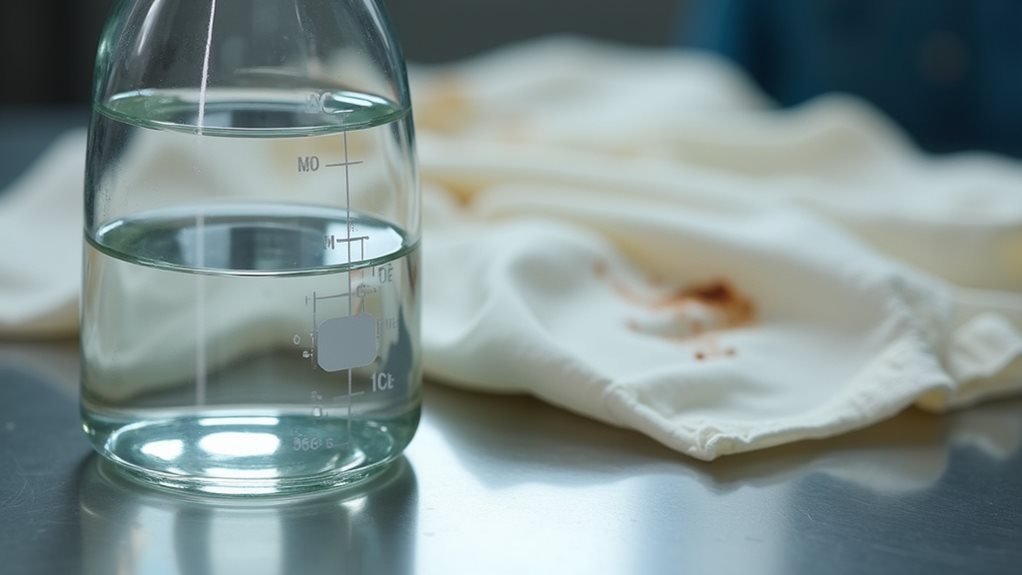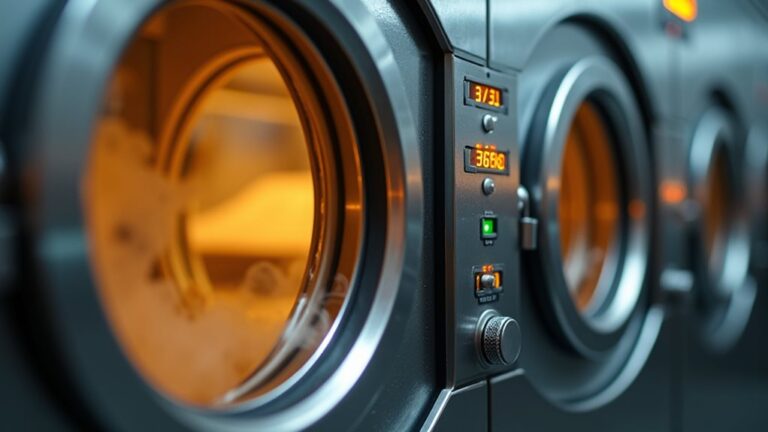Despite its misleading name, dry cleaning isn’t completely “dry”—it primarily uses chemical solvents like perchloroethylene instead of water to dissolve those stubborn oil-based stains your washing machine can’t handle. However, you’ll find that water does play a supporting role during rinse cycles to remove solvent residues, tackle water-based stains, and create steam for wrinkle removal during finishing touches. Understanding these nuances reveals why your delicate fabrics stay pristine.
Understanding the Dry Cleaning Process and Solvents
Although the name “dry cleaning” might make you think there’s absolutely no liquid involved, the truth is that your favorite delicate blouse is actually getting a thorough bath in chemical solvents that work far more gently than water ever could.
The dry cleaning process relies primarily on perchloroethylene, a powerful non-polar solvent that dissolves oil-based stains without penetrating fabric fibers like water does, which means your garments won’t shrink or lose their shape.
Perchloroethylene’s non-polar properties effectively dissolve stubborn oil stains while preserving fabric integrity, preventing the shrinkage and distortion that water-based cleaning methods typically cause.
This mechanical action, combined with tumbling motions, improves stain removal while protecting delicate fabrics from damage.
What’s particularly impressive is that approximately 99.99% of these chemical solvents get recovered through distillation for solvent reuse, making the entire process surprisingly efficient and environmentally conscious.
After the cleaning cycle, garments undergo solvent extraction and drying before receiving finishing touches like pressing and steaming to restore their original appearance.
When Water Is Actually Used in Dry Cleaning
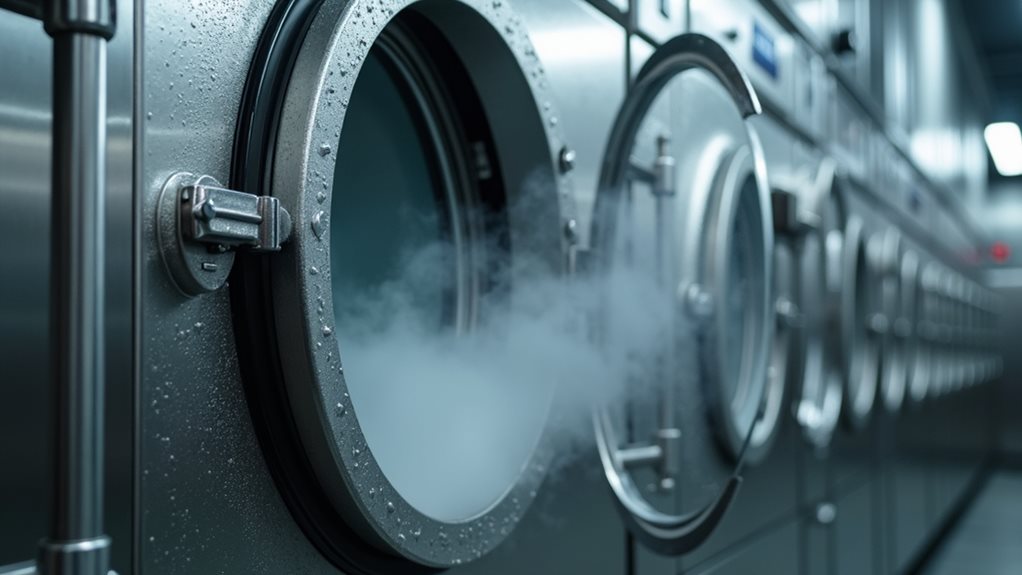
Despite what you might expect from a process called “dry” cleaning, there are actually several moments when water sneaks into the equation, and understanding these instances can help you make better decisions about your garment care.
Your dry cleaner might use water during the rinse cycle to wash away stubborn solvent residues, guaranteeing your garments come back truly clean.
Water also tackles specific water-based stains that solvents simply can’t handle—think coffee spills or sweat marks that laugh in the face of traditional cleaning methods.
During finishing stages, steam (which is just heated water, really) evens out wrinkles and freshens your clothes.
For delicate fabrics that react poorly to harsh solvents, water becomes the gentler alternative, boosting overall cleaning effectiveness while protecting your investment pieces.
The dry cleaning process primarily relies on specialized solvents like perchloroethylene or eco-friendly alternatives to dissolve oils and grease without damaging sensitive materials.
Why Traditional Washing Methods Don’t Work for Certain Fabrics
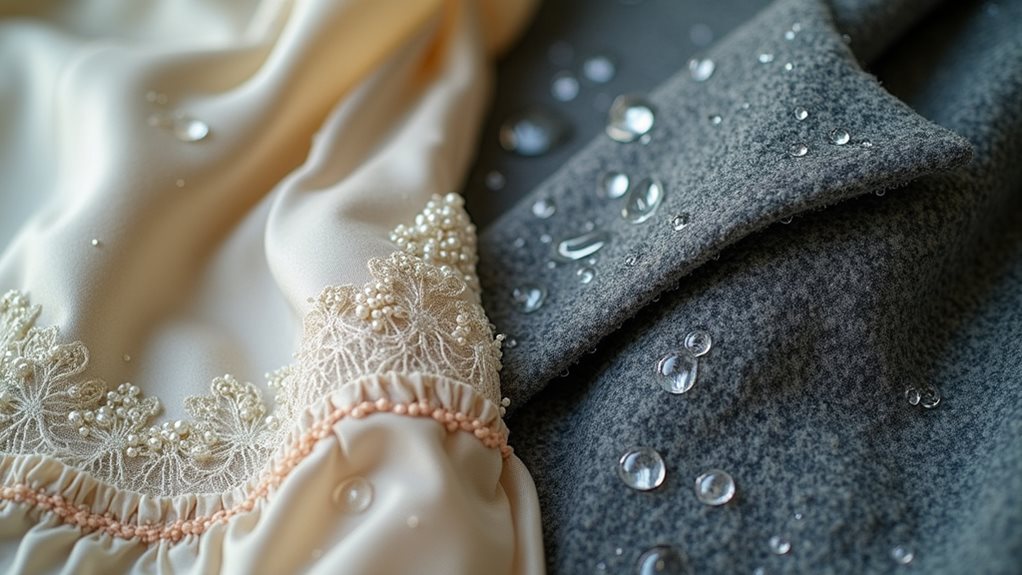
When you’ve ever watched a beloved cashmere sweater transform into doll-sized clothing after one tragic trip through your washing machine, you’ll understand why some fabrics simply can’t handle traditional water-based washing methods.
The reality is that delicate fabrics like wool, silk, and rayon react to water like vampires to sunlight—shrinkage becomes inevitable, and your favorite pieces lose their original shape and beauty.
Water also encourages color bleeding, turning your pristine white blouse into an unwanted tie-dye experiment.
Meanwhile, oil stains laugh at traditional washing methods, clinging stubbornly to fibers despite your best efforts.
The agitation from washing machines can damage intricate embellishments, which is precisely why dry cleaning uses chemical solvents instead, protecting your precious garments from unnecessary damage.
This specialized cleaning method typically uses perchloroethylene or newer eco-friendly alternatives as solvents to effectively clean these delicate materials without the risks associated with water-based washing.
The Role of Chemical Solvents in Fabric Care
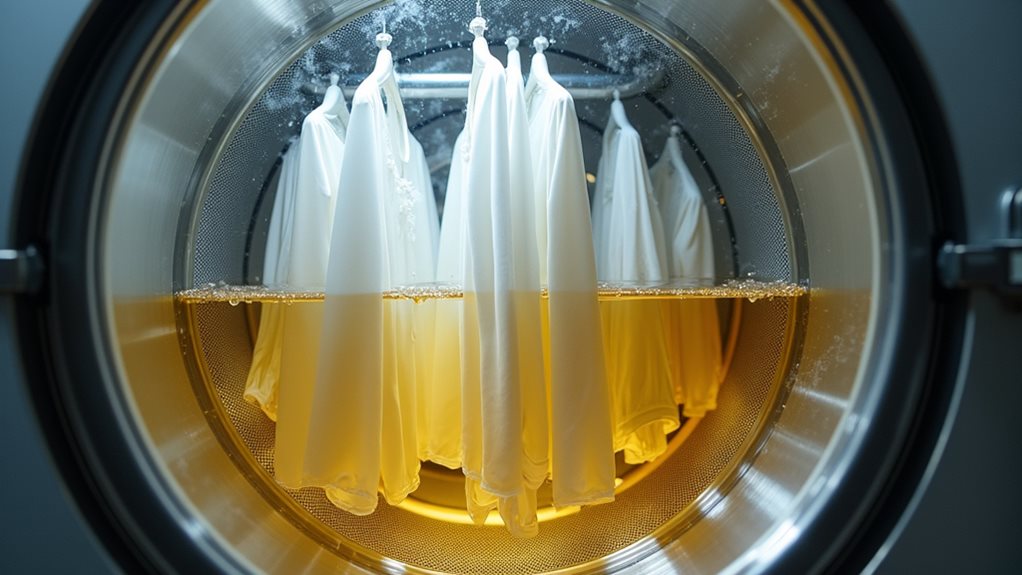
Chemical solvents step in like skilled surgeons where water would cause irreparable damage, using their unique molecular properties to gently dissolve oils, grease, and stubborn stains that water-based detergents simply can’t touch.
When you’re dealing with delicate fabrics like silk or wool, traditional dry cleaning methods rely on perchloroethylene (perc) as the workhorse solvent in dry cleaning operations. Your dry cleaning machine tumbles garments in these chemical solvents instead of water, preserving texture and preventing shrinkage that traditional cleaning methods can’t avoid.
Modern cleaning operations are shifting toward high-flash hydrocarbons and silicone-based alternatives, which offer safer options while maintaining effectiveness.
It’s fascinating how these solvents work at temperatures around 30°C, completing their magic in just 8-15 minutes! 🧪
After the cleaning cycle, garments undergo solvent extraction and drying, then are pressed, steamed, and finished to restore their original appearance.
Comparing Water-Based and Solvent-Based Cleaning Methods
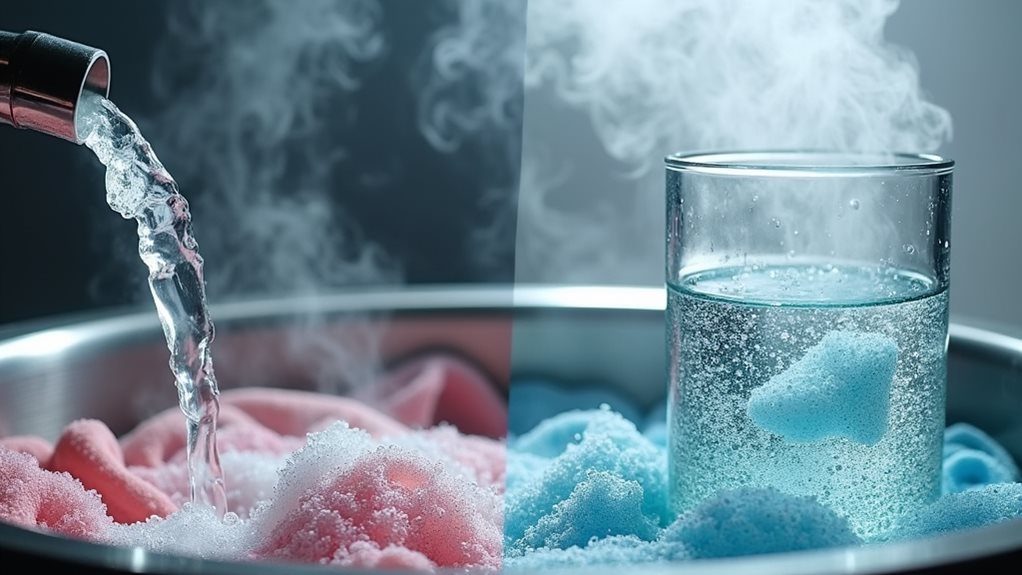
Although both cleaning methods aim to restore your favorite garments to their pristine condition, the fundamental difference between water-based and solvent-based approaches lies in how they tackle different types of stains and fabric vulnerabilities.
When you’re dealing with oil-based stains from that inevitable pasta sauce mishap 🍝, dry cleaning’s chemical solvents work like magic, dissolving greasy marks that water can’t touch.
Meanwhile, wet cleaning uses controlled water levels and specialized detergents, making it more environmentally friendly than traditional methods.
Your delicate fabrics benefit differently from each approach—water-based cleaning might cause shrinkage, while solvent-based methods protect fabric integrity.
Some cleaning methods even combine both, incorporating final rinsing steps to achieve superior results for your wardrobe.
Many dry cleaning facilities are now adopting safer alternatives like wet cleaning, liquid CO2, and hydrocarbon solvents to reduce the health risks associated with traditional chemical solvents.

